
Thank you for visiting HOJO website. If you have any enquiry, please feel free to get in touch with us at
▼ Akira Hojo
▼ Hojo Newsletter
▼ HOJO FACEBOOK





HOME > Black Tea > Darjeeling Autumnal Late Harvest

The Flowery and Fruity Flavor from tea that have been harvested late in Autumn. HOJO's Darjeeling Autumnal has both flavors. It is accompanied by a comfortable body and a slight astringency, which is suitable for various occasions.
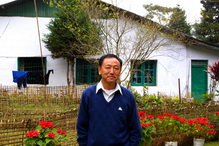
Darjeeling has the 1st Flush which is the spring tea, the 2nd flush which is the summer tea and Autumnal Tea. However the autumnal tea is made in the most traditional style which gives it an exceptional taste. The garden manager who has 30 over years of experience in tea making said he loved Autumnal tea the most. He thinks that the Autumnal tea is the most traditional tea in terms of processing method and taste.
In Taiwan Oolong Tea, the best tea is always the Winter Tea which is harvested in Nov-Dec. This is equivalent to the autumnal late harvest tea in Darjeeling. In China, there is a term "春水秋香". In English, it means Spring = Water and Autumn = Flavor. This explains that spring tea gives a very delicate and tender taste whereas autumn tea gives a very strong flavor. In addition, Autumnal Darjeeling tea is usually fermented at a much longer period than Spring Tea. It is suitable for people who like thick and sweet flavor with body.
We select our Darjeeling Tea from the lot produced in winter. Many customers wonder if there is a so-called winter tea in Darjeeling. Of course there is no such official category in India. Regardless of it being produced in September or December, both are called Autumnal tea. However as we are only interested in obtaining the winter tea as we believed that it is the best just like Taiwan High Mountain Tea. We especially made a trip t to Darjeeling at the end of November and selected the latest production lot at the factory. When we were in Darjeeling, it was 5 degree C in the daytime. With such cold weather, we managed to obtain the so-called Winter Tea.
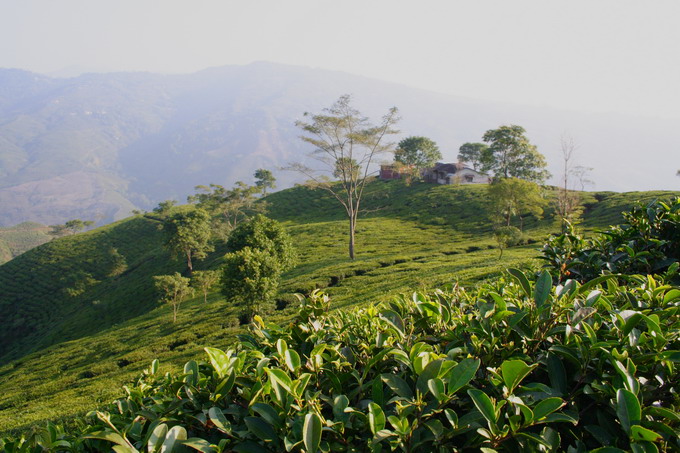
In China, Taiwan or India, the highest grade of tea is always produced at an organic tea garden. Particularly most of those Chinese Teas which are called Gift Tea (Tea that is served to VIPs) are produced in organic gardens. Do you think it is a coincidence?
In fact, it is the essential factor where premium teas are concerned. They are most certainly produced in organic gardens. In order to produce good tea, the tea garden must be in very natural condition; limited usage of fertilizer, severe environment, abundance of insects and limited rain affect to the growing speed of tea. As tea grows extremely slow, the taste, flavor and nutrition are all concentrated. In addition, another reason we select tea only from organic tea garden is for the Safety factor.
If you think you can only brew black tea once, you are absolutely mistaken; as our tea be very expensive as many assume, but it is not so. Usually those premium teas can be brewed for a few times. In particular, you can enjoy almost the same taste in the second brewing as in the first brewing. Considering the brewing performance, we gather that this tea is quite economical.


In the Darjeeling area, there are 3 kinds of tea produced. 1st flush is produced from March until April. The end of May to July is 2nd Flush and Autumnal is produced after September onwards. Although it is called Darjeeling Tea, you can detect a totally different taste depending on its season. We introduce Darjeeling Autumnal that is harvested at the end of November. Usually the tea season ends at the end of November. During this season, tea that is produced has very fresh buds which have quite similar characteristics as spring tea that is the sweetest through out the year. At the year end around October to November, there is almost no rain and the temperature at night is at around a few degrees C. It is very severe environment for the tea leaves that has to undergo a lot of stress. In addition, due to the harsh environment, the growing speed of tea leaves slow down, despite it synthesize nutrition, flavor and taste effectively during the morning. With slow growing rate, tea becomes very concentrated in terms of taste and flavor.
HOJO selects tea that is harvested during the coldest season. We made a trip to Darjeeling and selected the best lot directly from the Organic Tea Garden.
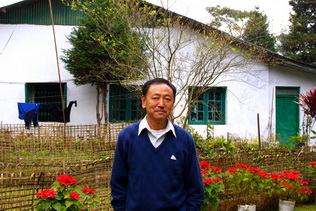
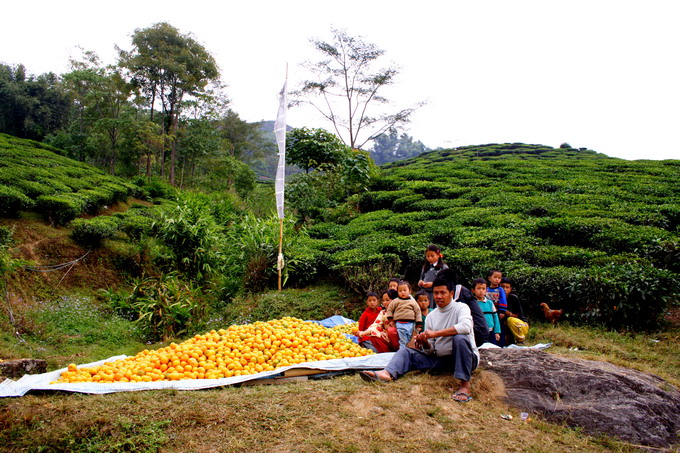
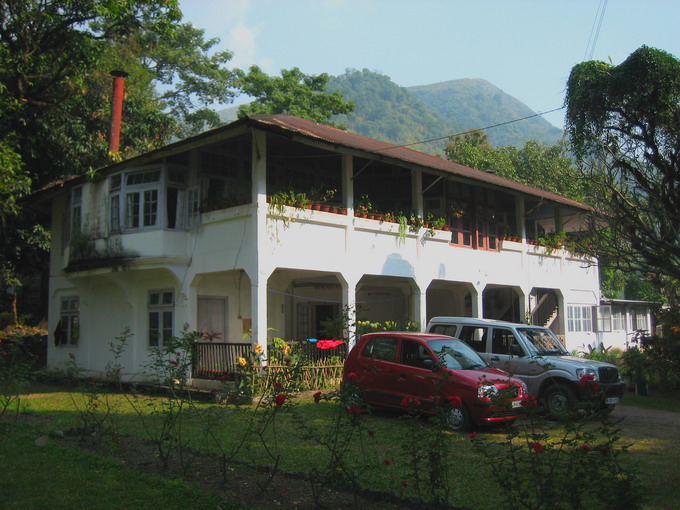
Darjeeling tea gardens were developed in the UK once upon a time. Thanks to its high altitude, China cultivar can survive in the Darjeeling area. China cultivar needs cold weather that could not suite other colonial area of England. That is a reason that tea from the Darjeeling tea garden that is located at high altitude is great. English people introduce very conventional and rational processing method. With very effective management system that was developed, following a military style as a guide, introduction of estate management system and implementation of effective machinery, they manage to produce good quality tea in large quantities.
Even after the independence of India from UK, the same organization, management system and the machinery such as Orthodox rolling machine are being used until today. But recently such Darjeeling tea gardens are about to change. Attempts are being made to develop original tea production method and introduction of Bio-garden management. The dawn of a new Darjeeling Era has just begun.
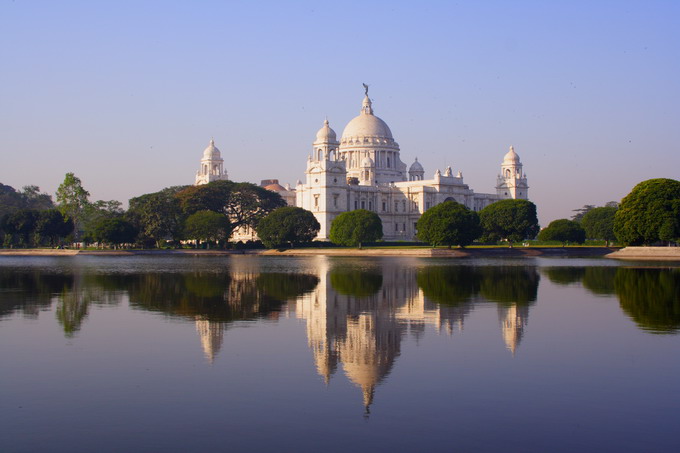
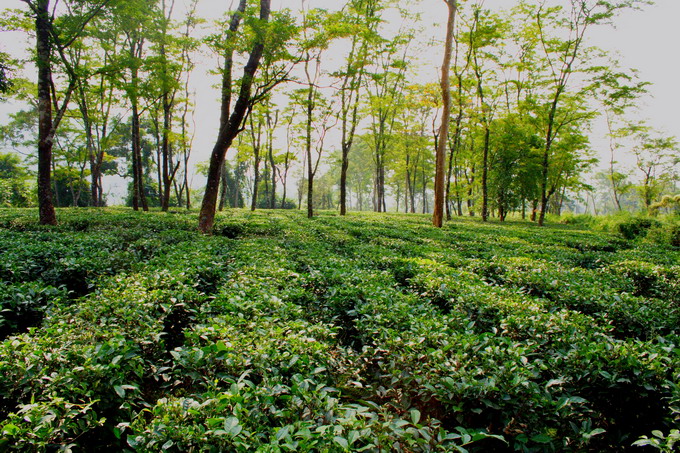
Darjeeling is located at the slope of Himalaya that is in the West Bengal of India. The common access to Darjeeling is either by Train or Air Plane via either Calcutta or Deli. The town located at the foot of Darjeeling Mountain is called Sinigri. It takes 2-3 hours to get to the Darjeeling town by car. There are a number of estates in Darjeeling. Classifying by the altitude, there are 3 kinds, Low Grown, Mid Grown and High Grown. It is a trend that the higher the altitude of tea garden, the mellower and sweeter the taste. However the tea garden that is above Mid Grown has an ability to produce good Darjeeling Tea too.
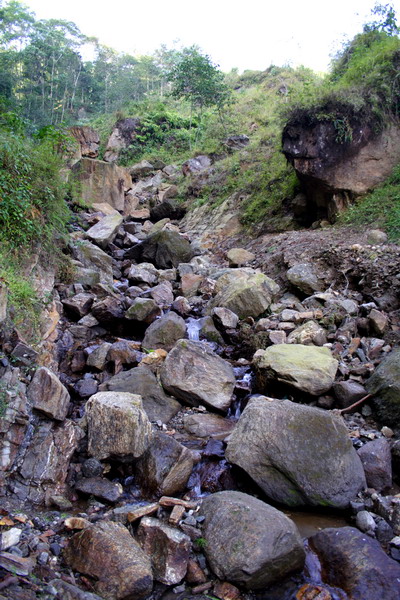
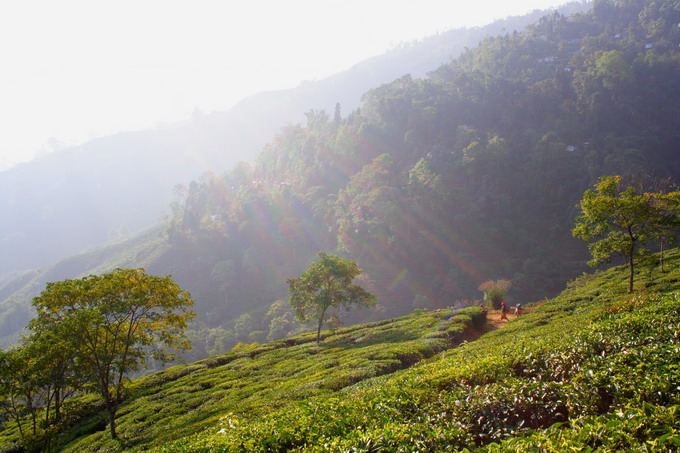
Due to its very high altitude and there are many valleys and rivers, Darjeeling is always covered by fog. In the early morning when it is very fine weather, we can take a view of the Himalaya range. Usually starting from 10am, most of Darjeeling area, not to mention the tea gardens are fully covered by very thick fog. Thanks to the presence of the thick fog, tea leaves produces less bitterness and it becomes very mellow in taste.
HOJO's Darjeeling tea comes from German Certified Organic Tea Garden. To attain this certification, Organic Tea Gardens need to control not only the usage of pesticide, but also they have to produce fertilizer and natural based pesticide from their own resources.
Fertilizer usage is not allowed unless a 3rd party can verify and certify that it does not contain any pesticide at all. Therefore they produce the fertilizer themselves to ensure stringent standards are maintained. To do this, cut grass from their estate is used, which is then watered at regular intervals and then piled up into heaps are carried out in order to make their own humus.
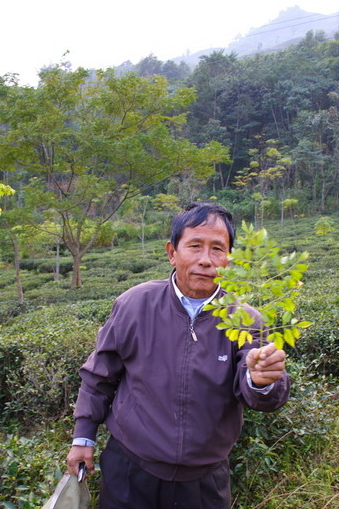

The manager of the tea garden has a very strict policy. Instead of using strong pesticides to rid the insects, they produce the extract from natural herbs. There are many herbs grown everywhere in their estate and these herbs are extracted and sprayed on the tea trees. However these herbs extract are not meant for killing insects, but to actually force the insects to leave the tea gardens. The manager mentioned that his policy is "Live or Leave" which means either the insects live in the tea garden without causing any harm to the tea leaves or leave. Some of the herbs they extract have a very bitter taste or strong odor and therefore insects are not attracted to it. The herbs inside the estates are harvested at regular intervals and steeped inside a water bath. After 2 weeks, plants are decomposed and juice is easily and well extracted. We also found lemon grass as well. It is also used and is very effective in ridding insects.
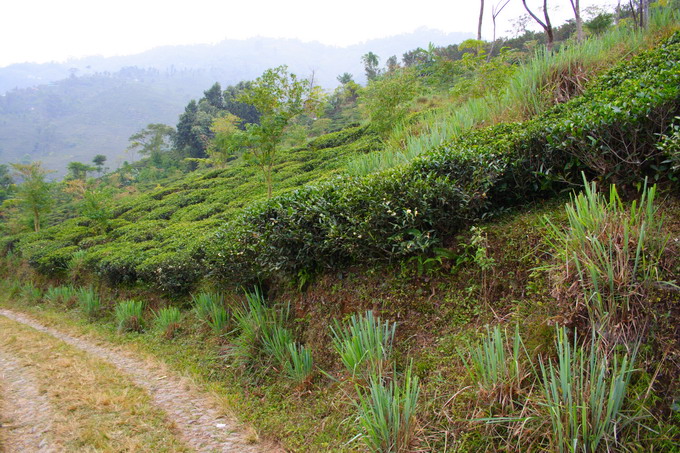

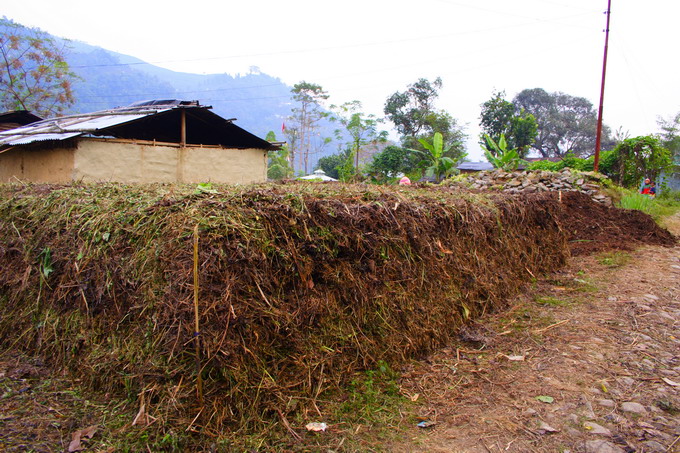
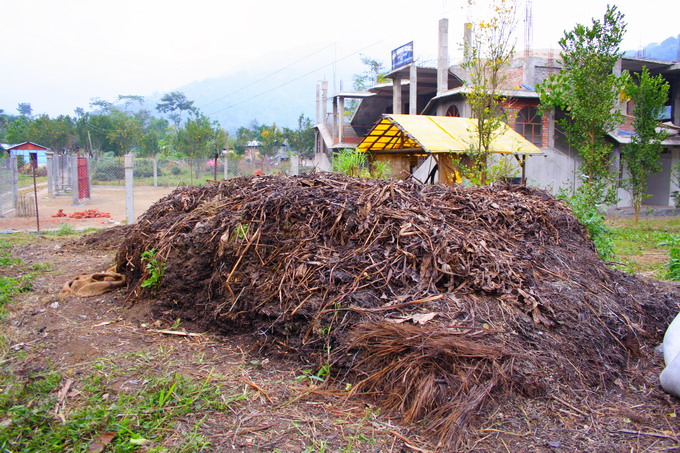
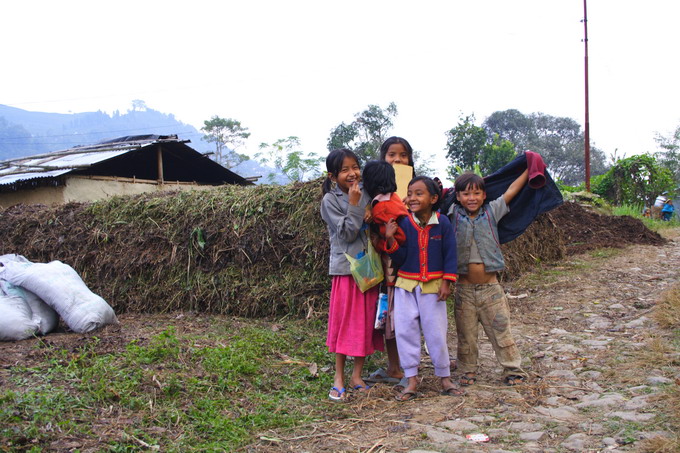
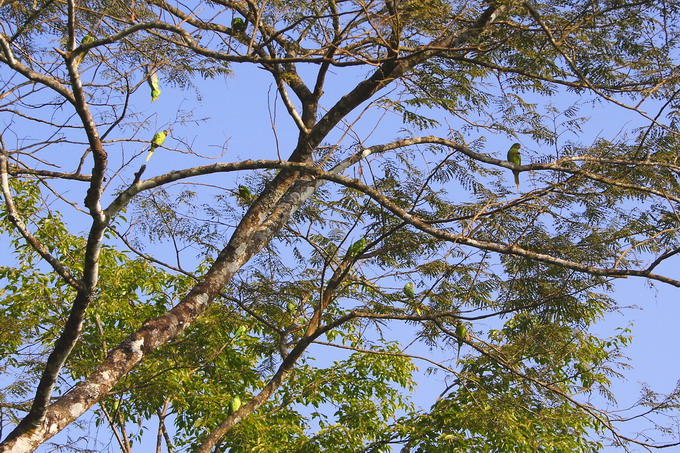
In the Darjeeling area, there were a lot of insects, fishes and birds some time ago. But it is said that the ecology of the area was destroyed and drastically decreased on account of the rampant usage of pesticides. However the ecology of Darjeeling is steadily recovering now thanks to the bio-garden practice and management. Initially, insects start returning, birds as the natural predator of insects also can be seen returning and finally the other animals have also made a comeback. When we were in Darjeeling, we also saw a number of parrots on the trees. According to the garden manager, he has not seen those birds for long time. But they are coming back steadily and their numbers are slowly but surely increasing.
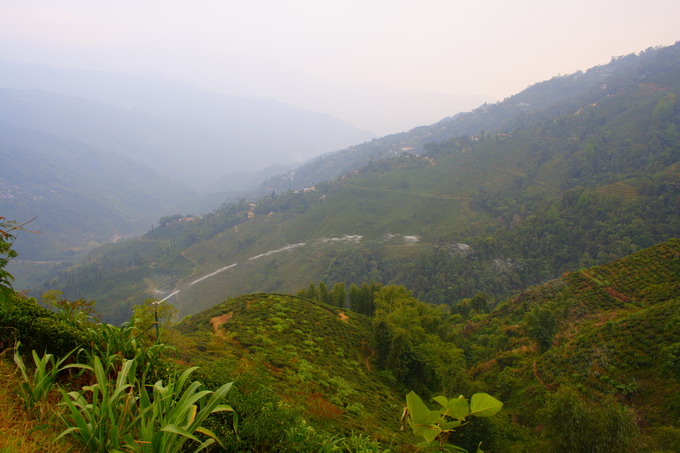
It is said that Darjeeling Tea produces a much more superior flavor and taste when it is under stressful environment. This theory could be applied to not only all kinds of tea, but also even to human. For example, the famous tea garden in Darjeeling by the name of Castleton produces very nice cups of tea every year. This tea garden has many rocks and stone, and is always lack of nutrition and water. Under this stressful environment, tea grows extremely slow. That is why the taste and flavor is concentrated and becomes so-called premium quality.
In the Darjeeling area, the harvesting of the first flush starts in Feb. The first flush are rich in moisture and therefore it is withered at a longer period and less fermentation is conducted. That is why the first flush is very light, flowery and greenish in flavor and very mellow and gentle in taste. From April to May, the Darjeeling area will be undergoing rainy season starting from April until the end of May. After the raining season is over, it will be the season of the 2nd flush which is well-known for its muscatel flavor. What is the reason for the muscatel flavor in the 2nd flush? The true reason has not been known for long time. It is due to the tiny green fly that is the contributor in the production of the muscatel flavor. It has exactly the same mechanism as the Oriental Beauty of Taiwan. When the raining season is over, the massive number of green flies comes up from the ground and starts sucking juice of tea leaves. Tea leaves then turn into yellow in color once it is being sucked and start producing some kind of antibiotics. In scientific terms, it is the substance called Phytoalexin. It is this substance that the tea leaves produce has a very fascinating muscatel flavor.
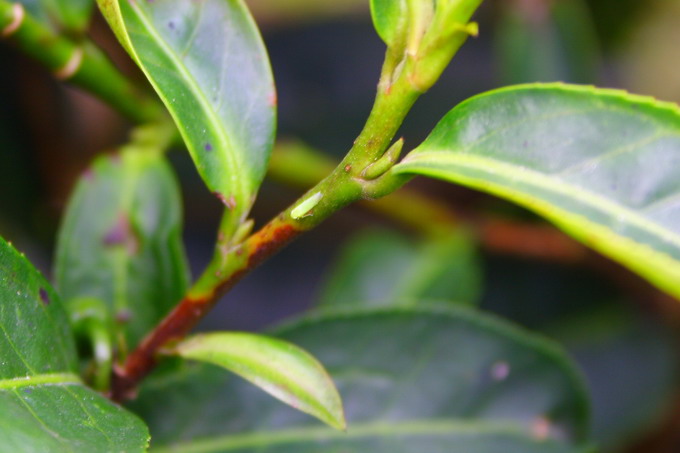
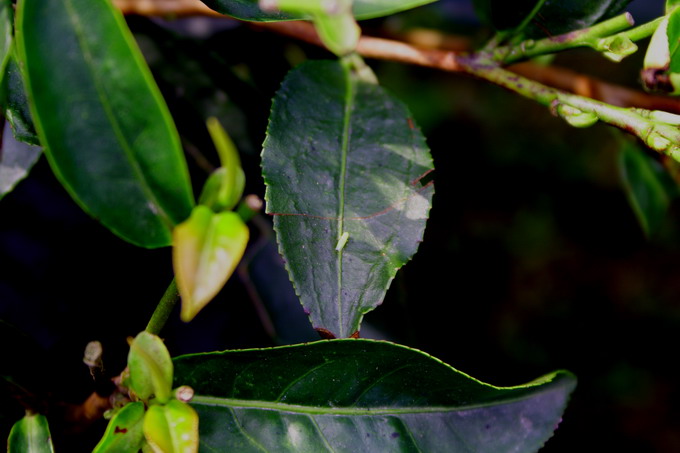
In addition, there is one more insect that contributes to the muscatel flavor. It is called Thrip. Usually this insect hides behind the leaf, inside the bud or flower. But once the season is approaching, it spreads over the tea garden and starts sucking the juice of tea leaves. The leaf that is attacked by this insect also produces a muscatel flavor. As far as we know, there are only these two insects which could contribute to the muscatel flavor. Other insects are basically classified as a pest.
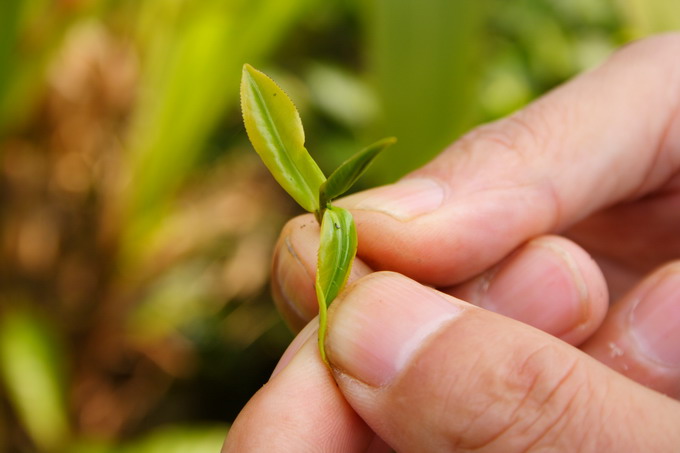
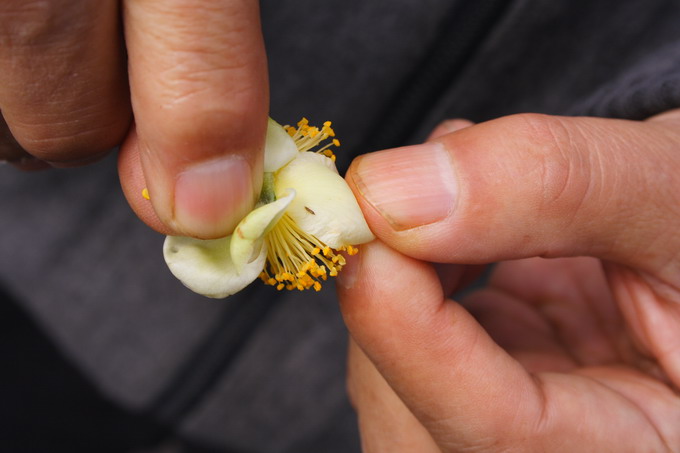
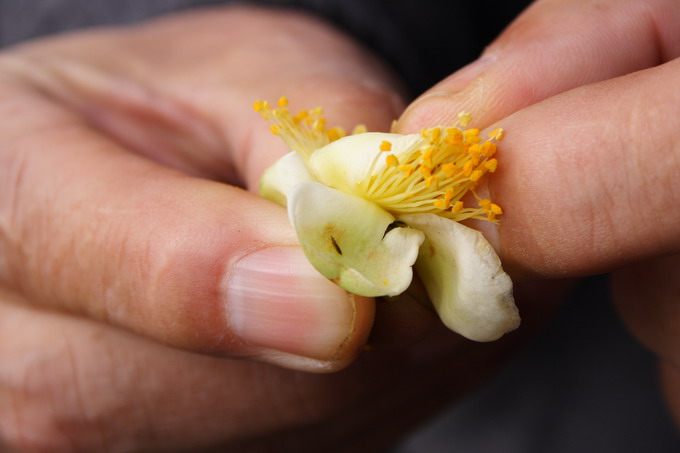
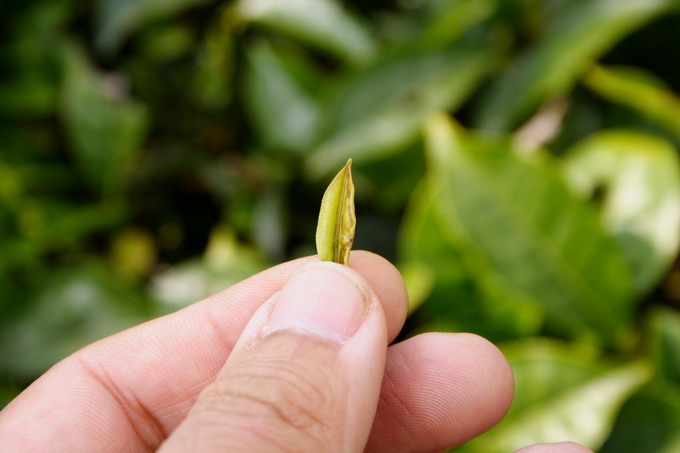
According to a Tea Garden Manager, he visited a tea garden when he was very young. That tea garden was extensively attacked by green flies and the tea leaves had all changed into yellow in color. He could smell a very strong fruity fragrance when he passed by that particular section.
During September to October, the number of insects decrease and tea leaves have less influence from the green flies. The majority of flavor consists of a very Darjeeling sweet flavor. The tea that is harvested in November to December is also called autumnal, yet the characteristics of tea is quite different from the earlier harvested autumnal. In November to December, tea starts producing very tender and soft bud just like early spring tea. In the late autumn to winter, where rain is less and weather is cold, tea gets stress from the environment and grows at a very slow speed. Therefore the substance is concentrated in tea leaves and eventually tea become very sweet and fragrant, which characteristics are similar to those winter tea in Taiwan.
There are a few different cultivars grown in Darjeeling area. The Assam cultivar is grown at low land tea garden. Assam cultivar gives a strong astringency and less sweet taste. It is mostly used for tea bag and low-end tea production. The tea garden that is located at the altitude above 1000m has hybrid cultivar which is between China and Assam. It is called clonal cultivar. The tea garden at that altitude is above 1000m onwards has relatively more China cultivar and those tea gardens at that altitude are above 1500m may all consist of China cultivar. China cultivar can only grow in cold weather. It gives a very sweet taste and delicate fragrance especially in autumn. The clonal cultivar gives a very strong aroma but weak in flavor and taste. It gives a slight astringency and has less body in taste. Due to its characteristics, clonal is sometimes used for blending in order to enhance the aroma.

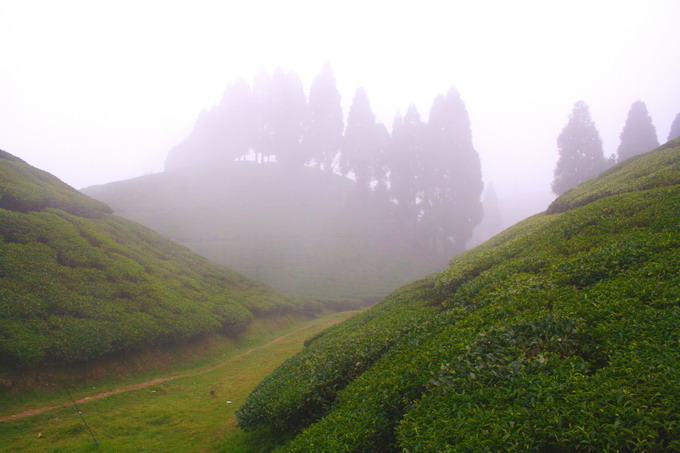
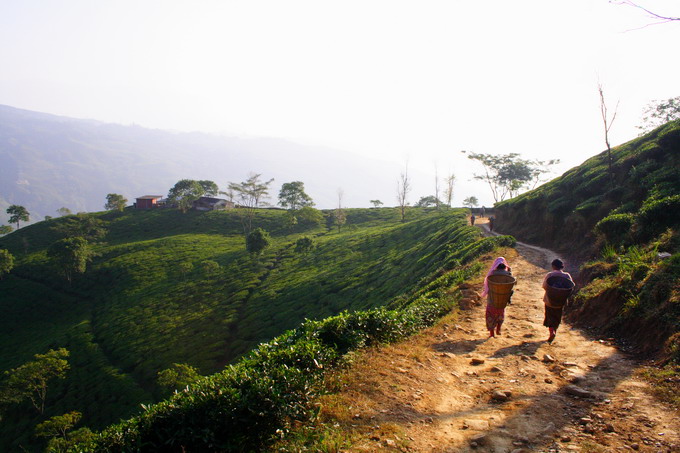
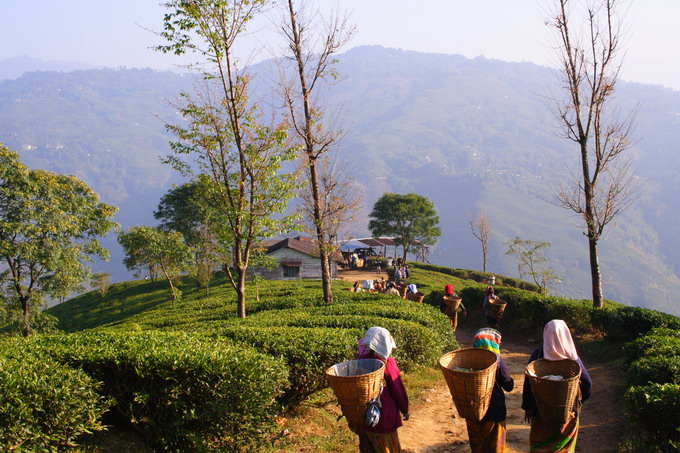
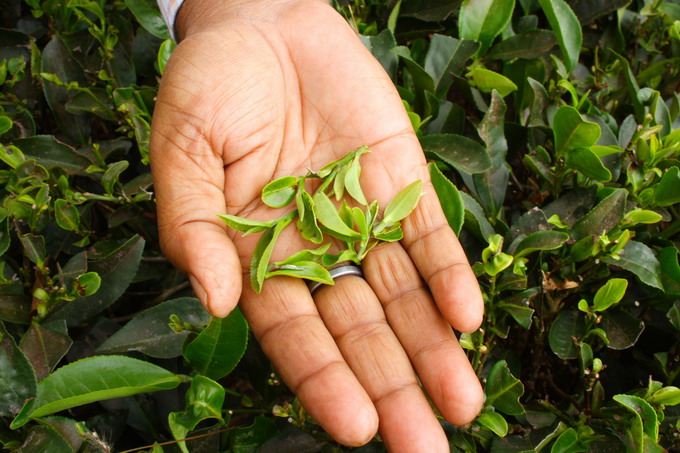
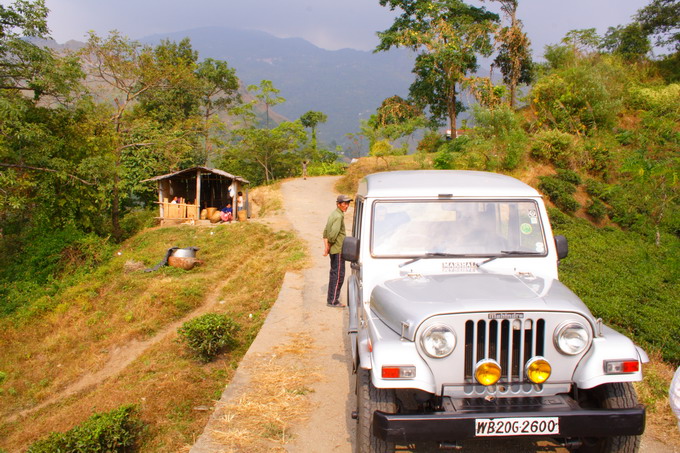
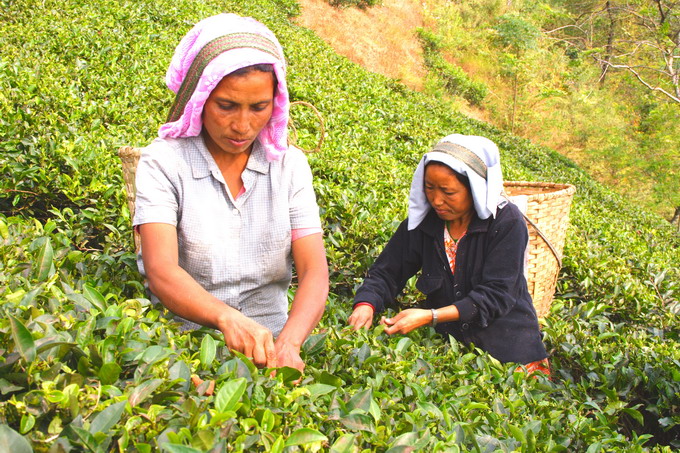
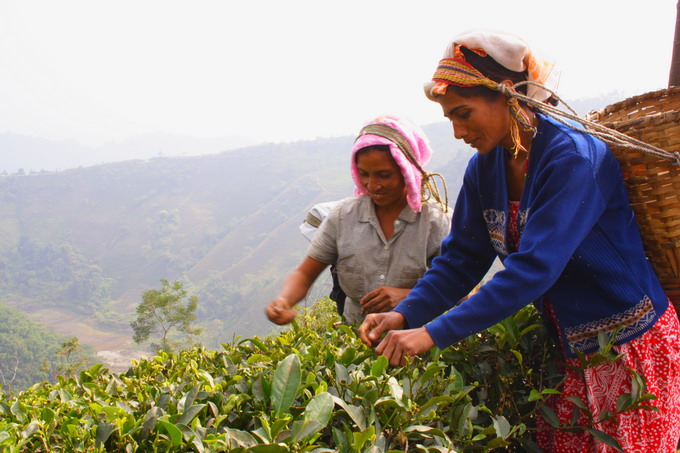
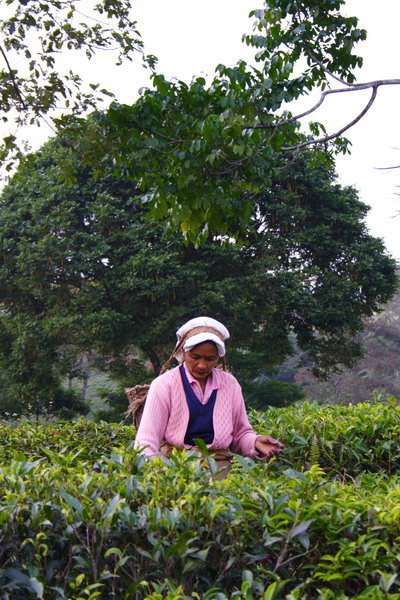
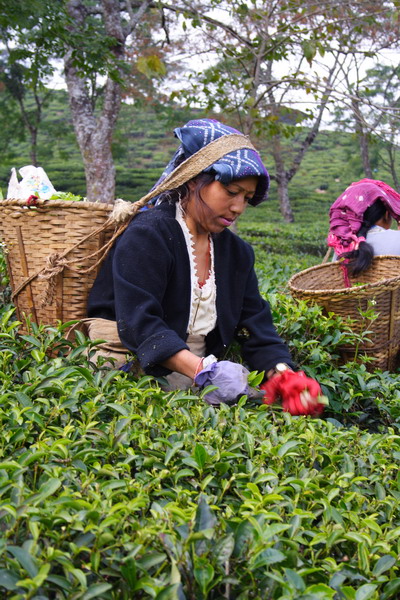

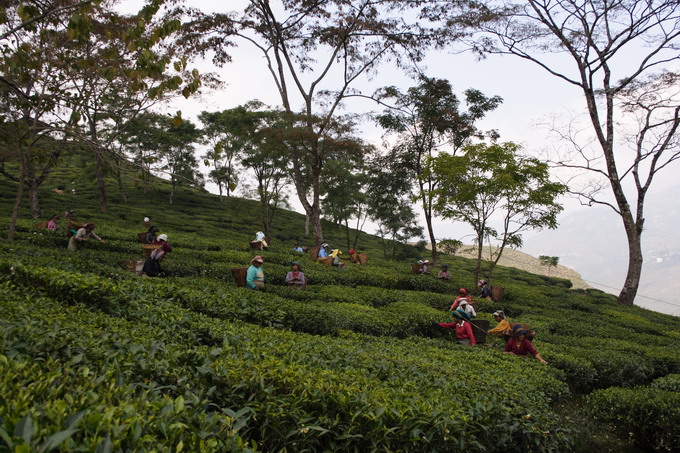



HOJO takes safety seriously as a part of quality. In order to ensure the safety, we personally visit the tea factory. The safety management of factory where we purchased our tea must be well implemented and tea must be produced in a very modern, hygienic quality control system.
Unlike to ordinary black tea, Darjeeling tea is not in black color. It appears to be a combination of yellow, green and red. The taste is also different from black tea. It is rather similar to oolong tea. Why is Darjeeling tea so special? It was said that it was because of the specific weather conditions of Darjeeling and its environment. However learning more and more about its process, we could well understand that the process of Darjeeling Tea play the most important role.
Of course, the specific environment and weather of Darjeeling is one of the important factors to create good tea. However we know that the weather, environment and even ecology extremely resemble those of high mountain areas of Taiwan. What then, makes such special characteristics of Darjeeling tea? It is the Withering Process. The most important process in making Darjeeling Black Tea is the Withering Process. It is said that mastering the withering process is equal to 70% of the entire process. As mentioned earlier, there 3 different kinds of Darjeeling tea, first flush, second flush and autumnal. Depending on the different season, different style of process is applied as the moisture content, poly phenol content and type of constituents in tea leaf varies a lot. The plucked leaves are spread onto the withering tray in very thin layers and air is blown from below. The bottom of the tray is perforated plate and therefore tea leaf is consistently blown.
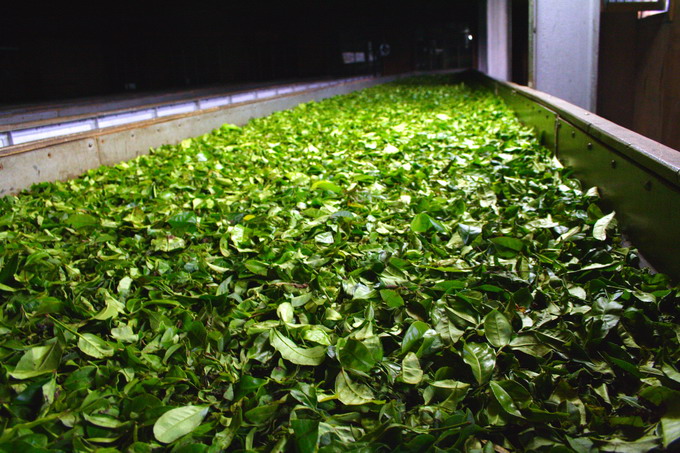
This process is called withering. For the Darjeeling tea, the withering process takes much longer time than ordinary black tea. It takes 24 hours to 48 hours. It continues until the moisture content is reduced to about 30%. Depending on the initial moisture content in tea leaf, the retention time of withering is adjusted. For ordinary black tea, withering is not conducted as long as Darjeeling tea. With higher moisture, the following fermentation effectively takes place. As a result, tea turns into black in color. During long withering process, some enzymatic reaction takes place and produces a sweet aroma. When we entered the withering room, it smelt just like a fruit garden! With lower moisture content in the tea leaves, Darjeeling tea can not get fermented effectively as enzyme need water to get fermentation started. Therefore the color of Darjeeling tea consists of red, yellow and green. In a sense, Darjeeling tea is semi-fermented tea which is similar to Oolong tea.
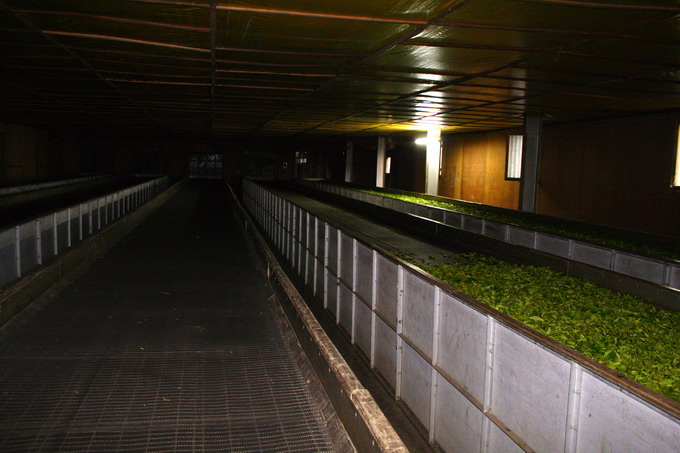
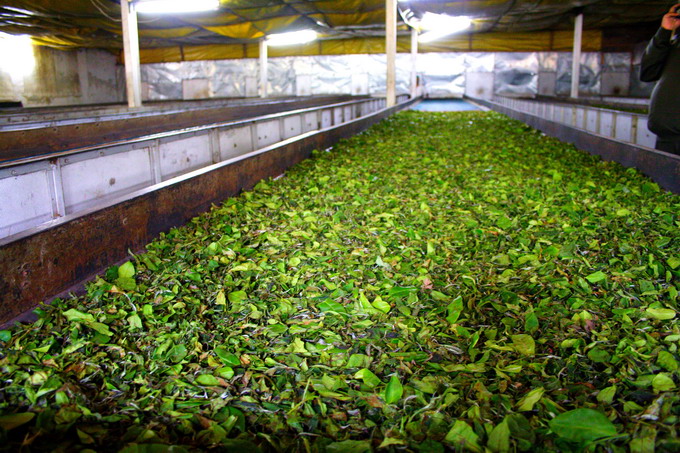
After the withering process, the tea leaves are sent for the rolling process. Rolling is carried out by Orthodox rolling machine which was developed by England centuries ago. Usually one machine handles 70-100kg of tea leaves. Rolling is carried out by 2 machines and the output from both machines is gathered. After moisture is further reduced, 70kg becomes 50-60kg. Therefore the final output from 2 machines is 50+50kg=100kg. That is why the minimum lot of Darjeeling tea trade is always about 100kg to 150kg. One lot of tea is too much for a small company to purchase. That is the origin of the idiom "A Lot Of". A lot of Tea was too Huge A Quantity to purchase for a small tea merchant.
Making top quality tea; it is important to avoid heat. During rolling process, they repeat with pressure and without pressure in order to release heat. Increasing the processing volume or rotation speed, temperature may increase and it affects to the quality. It is essential to use small volume with longer processing time. After all, tea becomes very exclusive in terms of quality and also price as it was processed spending much more time and care.
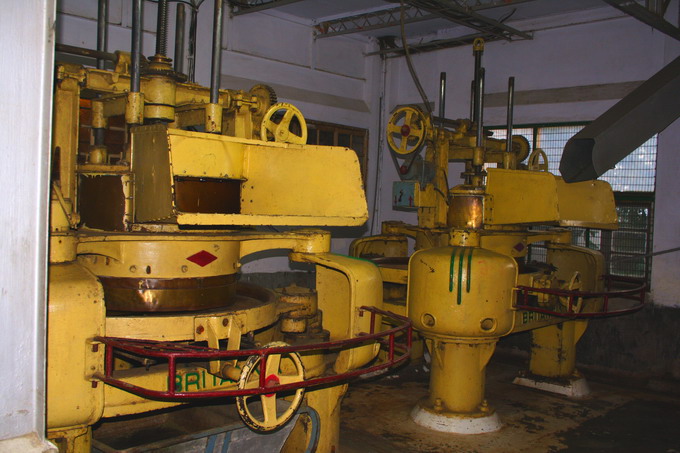
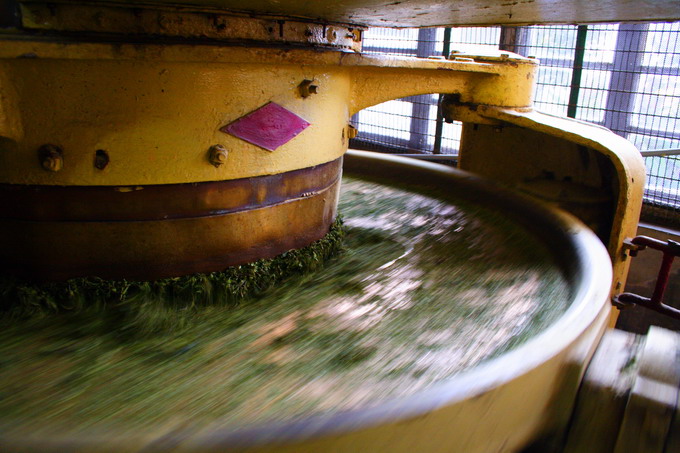
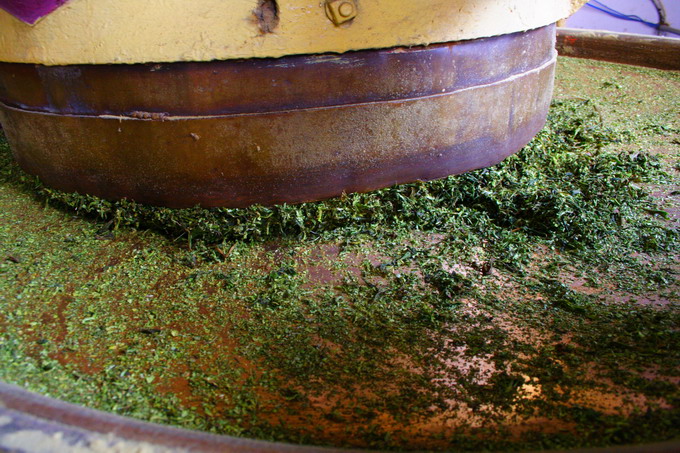

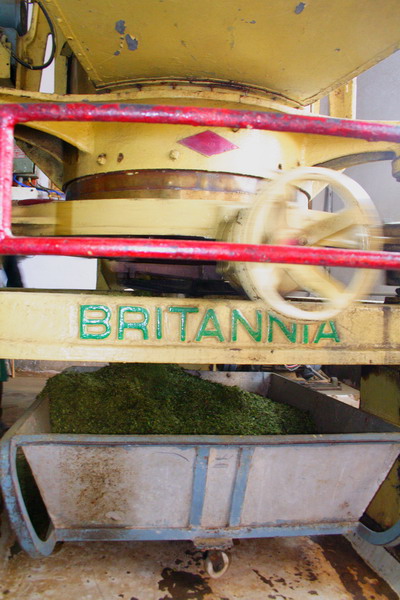
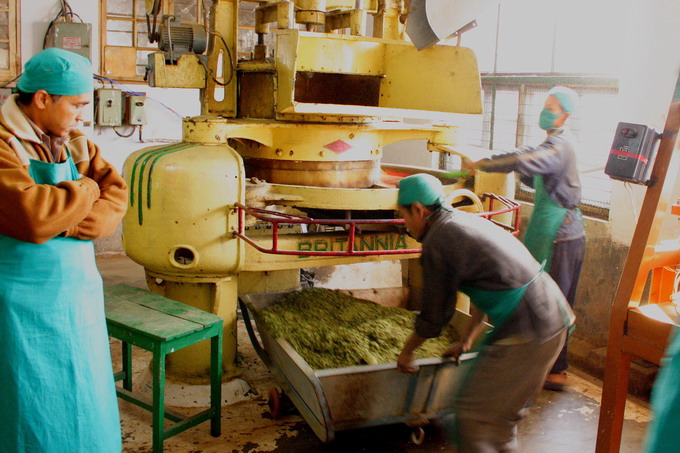
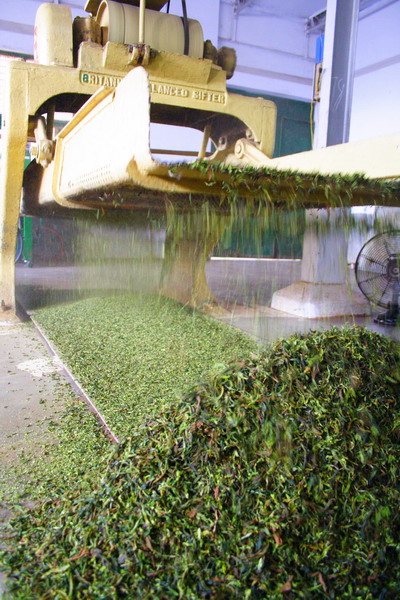
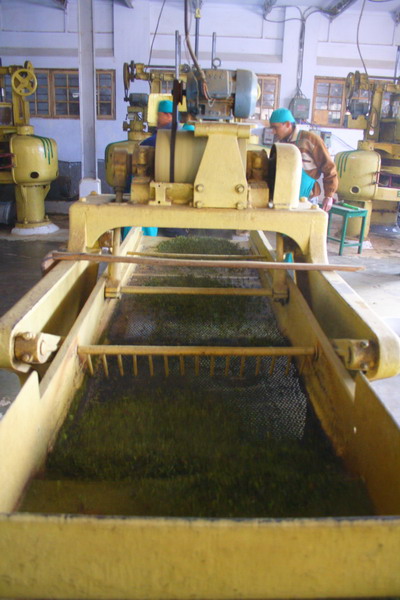
In the middle of rolling process, tea leaves are sieved by machine. The purpose of sieving is 1) To cool down tea leaves and 2) To classify tea leaves depending on the size. The leaves which is the biggest size and 2nd biggest is returned back to the rolling machine. The finer leaves are sent for fermentation. They are spread over the fermentation tray. Those fine dust accumulated are usually used for tea bags or blending. Usually the fermentation process is carried out on the floor. But due to the sanitation reasons, our supplier used stainless steel trays. We noted it was a very good practice.
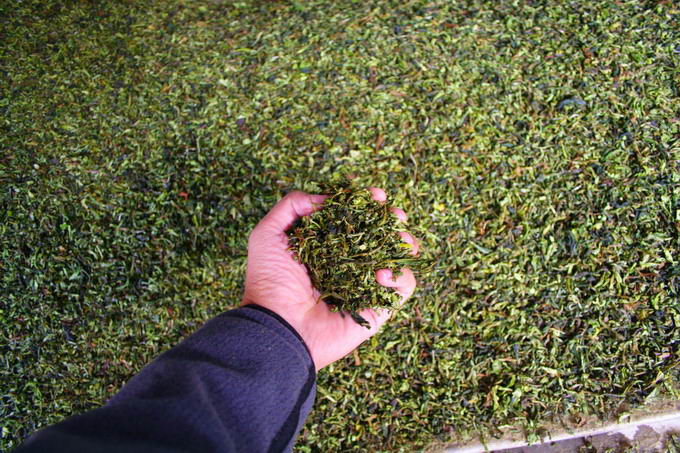
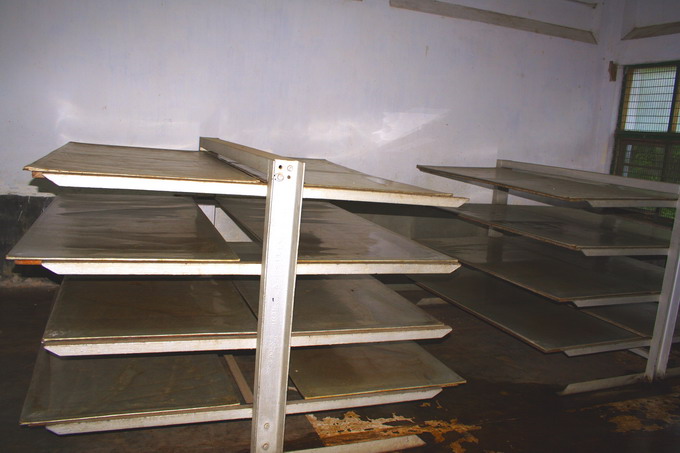
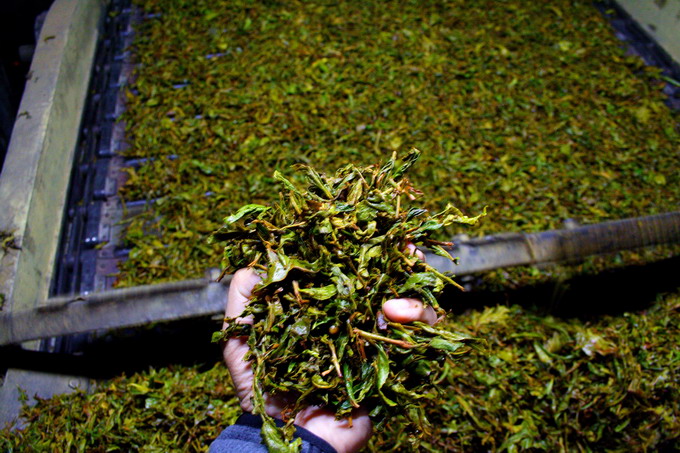
The purpose of the drying process is 1) To heat at high temperature in order to inactivate enzyme and stop fermentation. 2) To reduce moisture until below 5%.
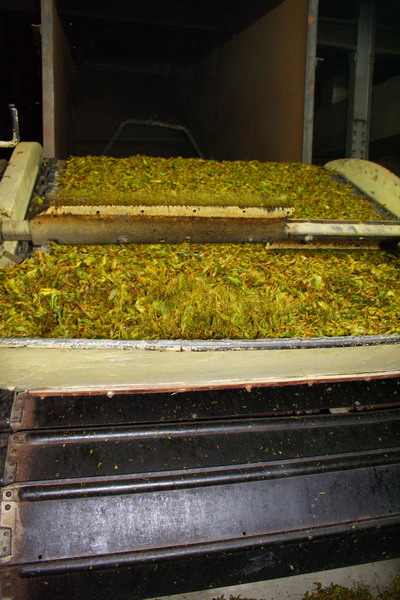
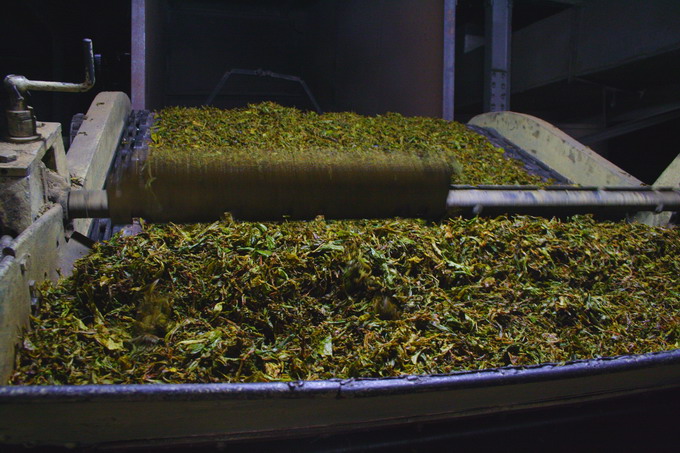
Leaves are bright in color and contain less stem. It is important to contain a lot of buds in white color.
Shape and size is consistent.
No foreign material such as bamboo, fiber, cloth, stone and so on.
Bright Orange and transparent.
Refreshing taste, smooth and mellow. It gives a sweet and slight astringency after taste.
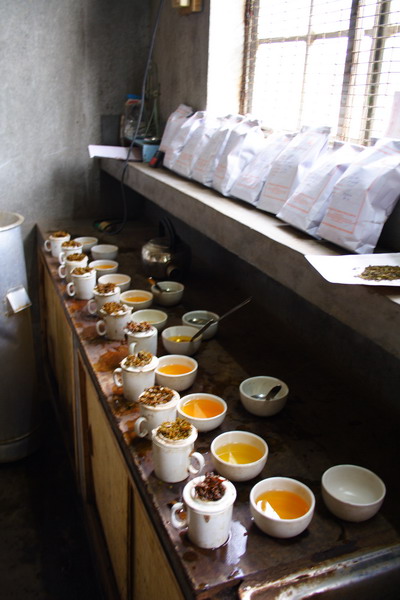
Brewed leaves are bright and do not contain dark leaves that indicate poor handling or material. Leaves are thick, tender and elastic.
The most effective way to inspect the quality of leaf is to carefully observe the brewed leaves. After brewing, cool down temperature of leaves and check the aroma. Good tea gives a very nice aroma even if leaves are cooling down. As for tea of poor quality, once you brew, there is no flavor left. In order to check aroma, make sure to remove water completely and get your nose as close as it is almost touching the leaves. Tea leaves will indicate its quality very honestly.
Darjeeling tea is not suitable to drink with milk as it contains very little tannin.
First, boil water. Please make sure to prepare soft water. The RO water and distillation water is not suitable. Due to the absent mineral content, they make tea tasteless. If you want to use normal tap water, it is advisable to use filtered water.
Go to further information about suitable water for brewing tea >>
Please make sure to boil water just before brewing tea. It is very important to boil water so as to evaporate chlorine and other kinds of contaminated substance in water. Do not boil for more than a few minutes. Boiling too long would rather concentrate the minerals and the character of water may change to hard water.
The suitable teapot for black tea is the red clay teapot. The bone China ware also gives a good effect. But still the effect of red clay is far better than bone china. Make sure to rinse the tea pot with boiling water for about 10-20 seconds in order to warm it up. Brewing time is about 30 seconds seconds. For 2nd brewing, please keep the brewing time less than a few seconds.
Take 3g of tea leaves (that is equivalent to one 2 tea spoon) for 200-300cc of water. Pour in boiling water from a high enough level in order to agitate the tea leaves.
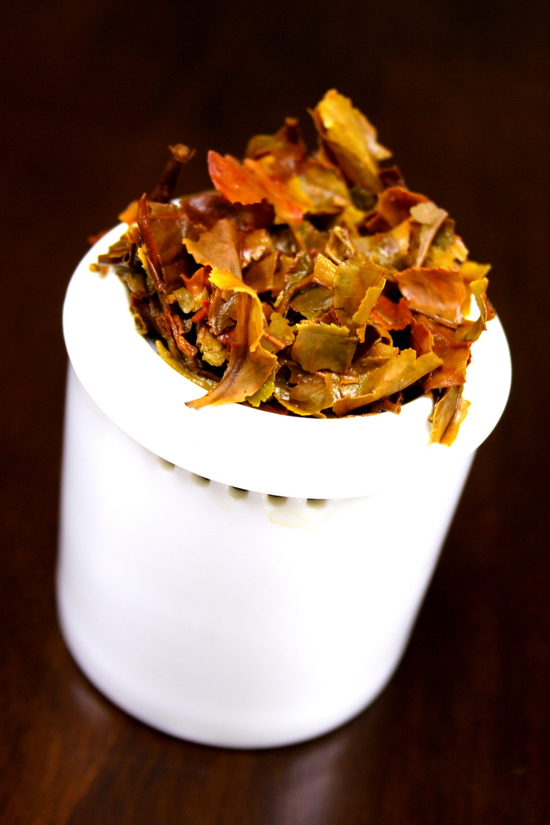
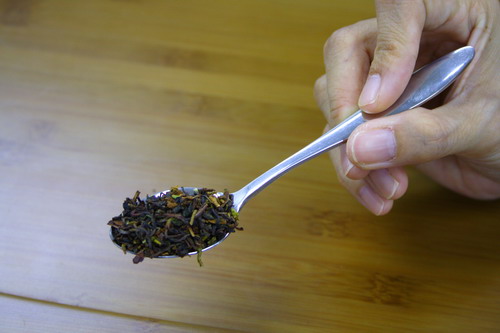
Once brewing is completed, make sure to pour out tea until the last drop. This is important to maintain the taste of subsequent brewing and also to avoid tea leaves from being over cooked.
So far it has not been known if anyone has tried to mature Darjeeling Tea. However Darjeeling Tea has a lot in common with Taiwan Oolong Tea. Many have attempted to store Taiwan Oolong Tea longer and have found another way of enjoying those teas. What if we apply this practice in Darjeeling Tea? You may create another character of Darjeeling Tea.

Please feel free to send us e-mail for enquiry at:

 |
We accept various kinds of credit card through Paypal.
Only if customer prefer other option of payment, we suggest "Bank Transfer".
Various choice of shipping method
EMS, SAL, Small Packet, Small Packet (SAL) Yamato Express and Surface
For shipping tea, we usually suggest small air parcel, the estimated shipping cost of tea in 100g (with wrapping material ) is
Small Parcel
USA JPY 600, EU JPY600 and Asia JPY470
Small Packet (SAL)
USA JPY380, EU JPY380 and Asia JPY320
The shipping fee to oversea by small air parcel happens to be even cheaper than domestic shipping fee in Japan.
For your information, some countries, EU in particular imposes custom duty. We need buyer to bare the duty. We are sorry, but we cannot change the amount on the invoice, and we do not mark any packages as gifts. We will strictly follow the custom regulation.